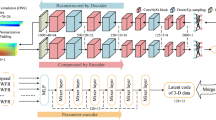Abstract
Continuous casting is the most important route for the production of steel today. Due to the physical, mechanical, and chemical components involved in the production, continuous casting is a very complex process, pushing conventional methods of monitoring and control to their limits. In recent years, this complexity and the increasing global competition created a demand for new methods to monitor and control the continuous casting process. Due to the success and associated rise of machine learning techniques in recent years, machine learning nowadays plays an essential role in monitoring and controlling complex processes. This publication presents a scientific survey of machine learning techniques for the analysis of the continuous casting process. We provide an introduction to both the involved fields: an overview of machine learning, and an overview of the continuous casting process. Therefore, we first analyze the existing work concerning machine learning in continuous casting of steel and then synthesize the common concepts into categories, supporting the identification of common use cases and approaches. This analysis is concluded with the elaboration of challenges, potential solutions, and a future outlook of further research directions.




Similar content being viewed by others
Notes
Some cold work tool steels form an exception to this definition.
In case any of the expressions in the denominator are zero the MCC is not defined
The fourth publication, Vannucci et al. (2011) applies two use cases and is therefore discussed one paragraph below
References
Ahmad, I., Kano, M., Hasebe, S., Kitada, H., & Murata, N. (2013). Design of inner and outer gray-box models to predict molten steel temperature in Tundish. IFAC Proceedings Volumes. https://doi.org/10.3182/20131218-3-IN-2045.00089.
Alpaydin, E. (2010). Introduction to machine learning (2nd ed.). London, UK: The MIT Press.
Annapureddy, R. R., Bhattacharya, A. K., & Reddy, M,.N. (2018). Adaptive critic design for extreme learning machines applied to noisy and drifting industrial processes. In 2018 IEEE symposium series on computational intelligence (SSCI) (pp. 327–334). IEEE: Bangalore, India.
Arnu, D., et al. (2017). A reference architecture for quality improvement in steel production. In P. Haber, T. Lampoltshammer, & M. Mayr (Eds.), Data Science - Analytics and Applications (pp. 85–90). Wiesbaden: Springer Fachmedien Wiesbaden.
Bartos, R., et al. (2007). Stahlfibel. Düsseldorf, Germany: Verlag Stahleisen GmbH.
Borvan53 (2010). Stack of slabs at the florange steelshop (france, moselle). https://commons.wikimedia.org/wiki/File:Slabs_stack.jpg. Accessed 7 January 2020.
Botchkarev, A. (2019). A new typology design of performance metrics to measure errors in machine learning regression algorithms. Interdisciplinary Journal of Information, Knowledge, and Management. https://doi.org/10.28945/4184.
Boughorbel, S., Jarray, F., & El-Anbari, M. (2017). Optimal classifier for imbalanced data using matthews correlation coefficient metric. PLoS ONE. https://doi.org/10.1371/journal.pone.0177678.
Cemernek, D., Gursch, H., & Kern, R. (2017). Big data as a promoter of industry 4.0: Lessons of the semiconductor industry. In 2017 IEEE 15th International Conference on Industrial Informatics (INDIN) (pp. 239–244).
Cheung, N., & Garcia, A. (2001). The use of a heuristic search technique for the optimization of quality of steel billets produced by continuous casting. Engineering Applications of Artificial Intelligence. https://doi.org/10.1016/S0952-1976(00)00075-0.
Colla, V., et al. (2011). Detection of transients in steel casting through standard and AI-based techniques. In J. Cabestany, I. Rojas, & G. Joya (Eds.), Advances in Computational Intelligence (pp. 256–264). Berlin, Heidelberg: Springer, Berlin Heidelberg.
dit Leksir Yazid, L., Salah, B., Seghir, B. M., & Jurgen, B. (2013) Adaptive support vector machine-based surface quality evaluation and temperature monitoring. Application to billet continuous casting process. The International Journal of Advanced Manufacturing Technology. https://doi.org/10.1007/s00170-012-4631-0.
Faizullin, A., Zymbler, M., Lieftucht, D., & Fanghanel, F. (2018). Use of Deep Learning for Sticker Detection During Continuous Casting. In 2018 Global Smart Industry Conference (GloSIC) (pp. 1–6). IEEE.
Fayyad, U., Piatetsky-Shapiro, G., & Smyth, P. (1996). From data mining to knowledge discovery in databases. AI Magazine. https://doi.org/10.1609/aimag.v17i3.1230.
García, S., Ramírez-Gallego, S., Luengo, J., Benítez, J. M., & Herrera, F. (2016). Big data preprocessing: methods and prospects. Big Data Analytics. https://doi.org/10.1186/s41044-016-0014-0.
García Nieto, P., Garcáa-Gonzalo, E., Álvarez Antón, J., Suárez, V. G., Bayón, R. M., & Martín, F. M. (2018). A comparison of several machine learning techniques for the centerline segregation prediction in continuous cast steel slabs and evaluation of its performance. Journal of Computational and Applied Mathematics. https://doi.org/10.1016/j.cam.2017.02.031.
Garcí Nieto, P., Suárez, V., Antón, J., Bayón, R., Blanco, J., & Fernández, A. (2015). A new predictive model of centerline segregation in continuous cast steel slabs by using multivariate adaptive regression splines approach. Materials. https://doi.org/10.3390/ma8063562.
Gheorghies, C., Crudu, I., Teletin, C., & Spanu, C. (2009). Theoretical model of steel continuous casting technology. Journal of Iron and Steel Research International. https://doi.org/10.1016/S1006-706X(09)60003-0.
Grešovnik, I., Kodelja, T., Vertnik, R., & Šarler, B. (2012). Application of Artificial Neural Networks to Improve Steel Production Process. Applied Simulation and Modelling / 777: Artificial Intelligence and Soft Computing (pp. 249–255). Calgary, AB, Canada: ACTAPRESS.
Grešovnik, I., Kodelja, T., Vertnik, R., Senčič, B., Kovačič, M., & Šarler, B. (2012). Application of artificial neural networks in design of steel production path. Computers, Materials and Continua. https://doi.org/10.3970/cmc.2012.030.019.
Guyon, I., & Elisseeff, A. (2003). An introduction to variable and feature selection. Journal of Machine Learning Research (JMLR), 3(3), 1157–1182.
He, F., & Zhang, L. (2018). Mold breakout prediction in slab continuous casting based on combined method of GA-BP neural network and logic rules. The International Journal of Advanced Manufacturing Technology. https://doi.org/10.1007/s00170-017-1517-1.
Hossin, M., & Sulaiman, M. (2015). A review on evaluation metrics for data classification evaluations. International Journal of Data Mining & Knowledge Management Process, 5(2), 1.
Javurek, M. (2008). The continuous casting process. https://commons.wikimedia.org/wiki/File:Lingotamento_Continuo-Continuous_Casting.png. Accessed 29 November 2019.
Ji, C., Cai, Z.-Z., Tao, N.-B., Yang, J.-L., & Zhu, M.-Y. (2012). Molten steel breakout prediction based on genetic algorithm and BP neural network in continuous casting process. In Proceedings of the 31st Chinese Control Conference (pp. 3402–3406). IEEE.
Jiang, L.-H., Wang, A.-G., Tian, N.-Y., Zhang, W.-C., & Fan, Q.-L. (2011). BP neural network of continuous casting technological parameters and secondary dendrite arm spacing of spring steel. Journal of Iron and Steel Research International. https://doi.org/10.1016/S1006-706X(11)60099-X.
Jokhakar, V., & Patel, S. V. (2015). A review of business intelligence techniques for mild steel defect diagnosis. International Journal of Computer Applications. https://doi.org/10.5120/19863-1823.
Kourti, T., & MacGregor, J. F. (1995). Process analysis, monitoring and diagnosis, using multivariate projection methods. Chemometrics and Intelligent Laboratory Systems. https://doi.org/10.1016/0169-7439(95)80036-9.
Li, F., et al. (2018). Ensemble Machine Learning Systems for the Estimation of Steel Quality Control. In 2018 IEEE International Conference on Big Data (Big Data) (pp. 2245–2252). IEEE.
Li, W., Li, Y., & Zhang, Y. (2010). Study of mould breakout prediction technique in continuous casting production. In 2010 3rd International Conference on Biomedical Engineering and Informatics Vol. 7 (pp. 2966–2970). IEEE.
Lieber, D., Stolpe, M., Konrad, B., Deuse, J., & Morik, K. (2013). Quality prediction in interlinked manufacturing processes based on supervised & unsupervised machine learning. Procedia CIRP. https://doi.org/10.1016/j.procir.2013.05.033.
Matsko, I. (2012). Adaptive fuzzy decision tree with dynamic structure for automatic process control system of continuous cast billet production. IOSR Journal of Engineering. https://doi.org/10.9790/3021-02835355.
Mehdiyev, N., Lahann, J., Emrich, A., Enke, D., Fettke, P., & Loos, P. (2017). Time series classification using deep learning for process planning: A case from the process industry. Procedia Computer Science. https://doi.org/10.1016/j.procs.2017.09.066.
Miriyala, S. S., Subramanian, V. R., & Mitra, K. (2018). TRANSFORM-ANN for online optimization of complex industrial processes: Casting process as case study. European Journal of Operational Research. https://doi.org/10.1016/j.ejor.2017.05.026.
Mitchell, T. M. (2010). Machine learning. McGraw-Hill series in computer science : Artificial intelligence. Internat. ed., 24. [print.]. edn.
Murata, N., Sonoda, S., Hino, H., Kitada, H., & Kano, M. (2012). Sensitivity analysis for controlling molten steel temperature in Tundish. IFAC Proceedings Volumes. https://doi.org/10.3182/20120910-3-JP-4023.00047.
Papaefthymiou, S., Tzevelekou, T., Antonopoulos, A., & Gypakis, A. (2016). Typical defects in plate and long steel products. International Journal of Structural Integrity. https://doi.org/10.1108/IJSI-09-2015-0039.
Patel, M., & Krishna, P. (2013). A review on application of artificial neural networks for injection moulding and casting processes. International Journal of Advances in Engineering Sciences, 3(1), 1–12.
Popa, E. M., & Kiss, I. (2011). Assessment of surface defects in the continuously cast steel. Acta Technica Corviniensis, 4(4), 109–115.
Ren, T., Shi, X., Li, D., Jin, X., Wu, Y., & Sun, W. (2010). Research on Breakout Prediction System Based on Multilevel Neural Network. In 2010 International Conference on Electrical and Control Engineering (pp. 1652–1655). IEEE.
Saha Roy, P. D., & Tiwari, P. K. (2016). Knowledge discovery and predictive accuracy comparison of different classification algorithms for mould level fluctuation phenomenon in thin slab caster. Journal of Intelligent Manufacturing. https://doi.org/10.1007/s10845-016-1242-x.
Salah, B., Zoheir, M., Slimane, Z., & Jurgen, B. (2015). Inferential sensor-based adaptive principal components analysis of mould bath level for breakout defect detection and evaluation in continuous casting. Applied Soft Computing. https://doi.org/10.1016/j.asoc.2015.04.042.
Santos, C., Spim, J., & Garcia, A. (2003). Mathematical modeling and optimization strategies (genetic algorithm and knowledge base) applied to the continuous casting of steel. Engineering Applications of Artificial Intelligence. https://doi.org/10.1016/S0952-1976(03)00072-1.
Sayed, M. S., & Hamid, R. E. (2010). Applying data mining methods to predict defects on steel surface. Journal of Theoretical and Applied Information Technology, 20(2), 87–92.
Sonoda, S., Murata, N., Hino, H., Kitada, H., & Kano, M. (2012). A statistical model for predicting the liquid steel temperature in ladle and tundish by bootstrap filter. ISIJ International. https://doi.org/10.2355/isijinternational.52.1086.
Thomas, B. G. (2003). On-line Detection of Quality Problems in Continuous Casting of Steel. In Modeling, Control and Optimization in Ferrous and Nonferrous Industry, 2003 Materials Science and Technology Symposium (pp. 29–45).
Tirian, G.-O., Filip, I., & Proştean, G. (2014). Adaptive control system for continuous steel casting based on neural networks and fuzzy logic. Neurocomputing. https://doi.org/10.1016/j.neucom.2012.11.052.
Vannucci, M., & Colla, V. (2011). Novel classification method for sensitive problems and uneven datasets based on neural networks and fuzzy logic. Applied Soft Computing. https://doi.org/10.1016/j.asoc.2010.09.001.
Vannucci, M., Colla, V., & Cateni, S. (2015). An Hybrid Ensemble Method Based on Data Clustering and Weak Learners Reliabilities Estimated Through Neural Networks. In Advances in Computational Intelligence Vol. 9095 of Lecture Notes in Computer Science (pp. 400–411). Cham: Springer International Publishing.
Vannucci, M., Colla, V., Nastasi, G., & Matarese, N. (2011). Detection of rare events within industrial datasets by means of data resampling and specific algorithms. International Journal of Simulation: Systems, Science and Technology, 11(3), 1–11.
Varfolomeev, I. A., Ershov, E. V., & Vinogradova, L. N. (2018). Statistical control of defects in a continuously cast billet based on machine learning and data analysis methods. Automation and Remote Control,. https://doi.org/10.1134/S0005117918080076.
Wirth, R. (2000). CRISP-DM : Towards a Standard Process Model for Data Mining. In Proceedings of the Fourth International Conference on the Practical Application of Knowledge Discovery and Data Mining (pp. 29–39).
Wuest, T., Irgens, C., & Thoben, K.-D. (2014). An approach to monitoring quality in manufacturing using supervised machine learning on product state data. Journal of Intelligent Manufacturing. https://doi.org/10.1007/s10845-013-0761-y.
Ye, X., Wu, X., & Guo, Y. (2018). Real-time Quality Prediction of Casting Billet Based on Random Forest Algorithm. In 2018 IEEE International Conference on Progress in Informatics and Computing (PIC) (pp. 140–143). IEEE.
Zhang, B.-G., Zhang, X., & Fan, L. (2016). Breakout prediction based on BP neural network in continuous casting process. MATEC Web of Conferences. https://doi.org/10.1051/matecconf/20166105020.
Acknowledgements
The Know-Center is funded within the Austrian COMET Program—Competence Centers for Excellent Technologies under the auspices of the Austrian Federal Ministry of Transport, Innovation and Technology, the Austrian Federal Ministry of Economy, Family and Youth and by the State of Styria. COMET is managed by the Austrian Research Promotion Agency FFG.
Author information
Authors and Affiliations
Corresponding author
Additional information
Publisher's Note
Springer Nature remains neutral with regard to jurisdictional claims in published maps and institutional affiliations.
Rights and permissions
About this article
Cite this article
Cemernek, D., Cemernek, S., Gursch, H. et al. Machine learning in continuous casting of steel: a state-of-the-art survey. J Intell Manuf 33, 1561–1579 (2022). https://doi.org/10.1007/s10845-021-01754-7
Received:
Accepted:
Published:
Issue Date:
DOI: https://doi.org/10.1007/s10845-021-01754-7




